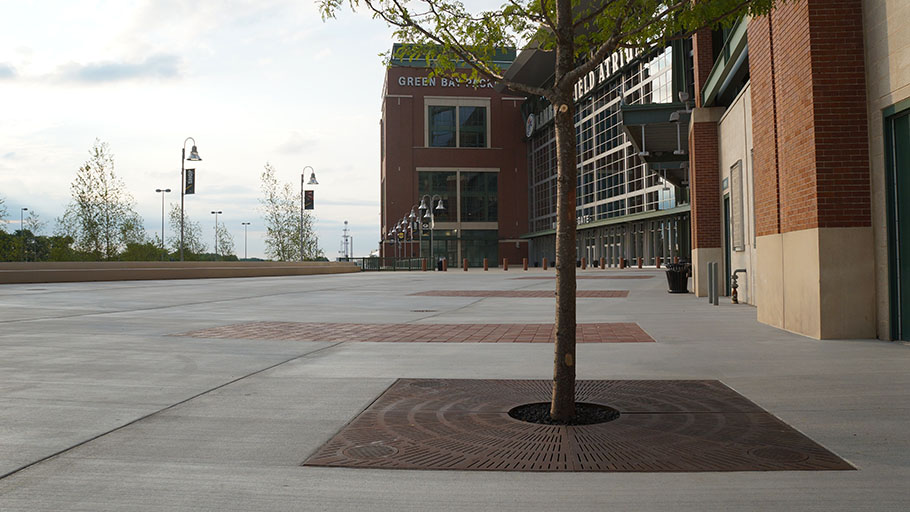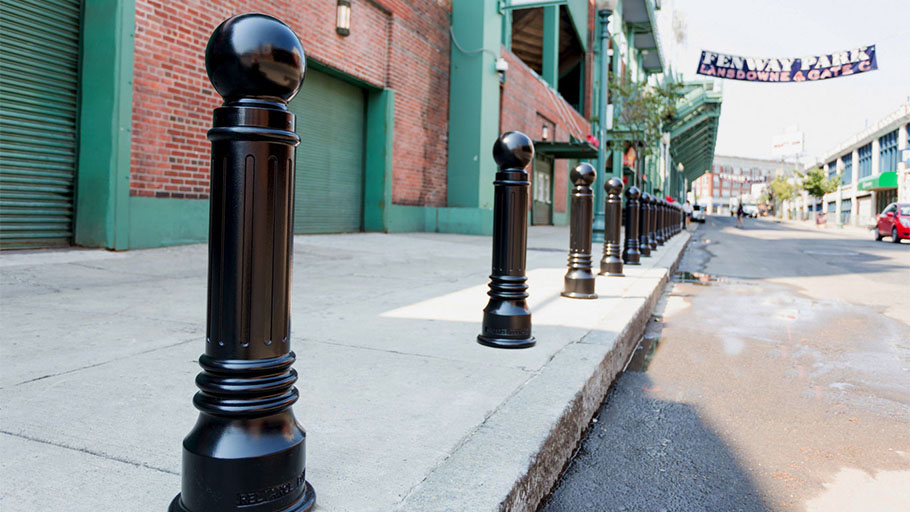How to build better bicycle communities
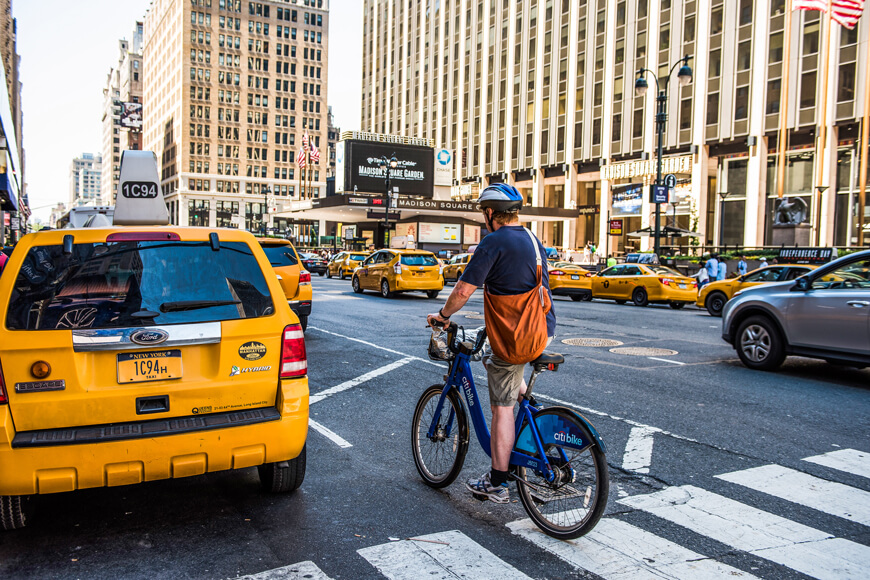
A vibrant bike culture is growing across North America, but its scope is still miniscule when compared to Europe. In Denmark and Holland cycling is the norm for both general transportation and commuting to work or school. In this blog post, we’ll look at trends on both sides of the Atlantic, and how to support the cycling communities of the future.
Cycling in North America
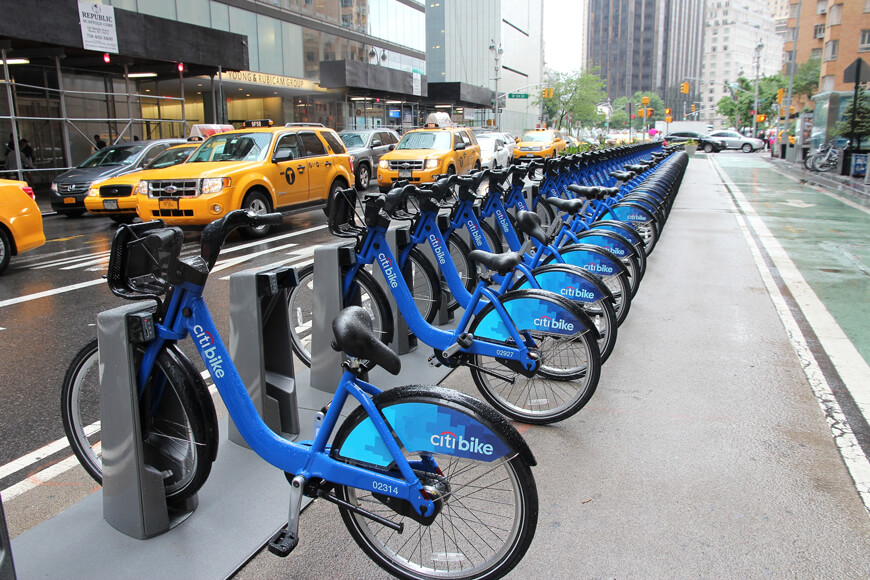
The number of cyclists in the United States and Canada has increased steadily for the past two decades. According to a study published in 2011—which looked at data from national surveys conducted by the U.S. Department of Transportation—North America is in the midst of a “cycling renaissance”.
What does this look like? In the United States and Canada:
- The number of bike trips taken each year tripled between 1977 and 2009
- The number of people biking to work doubled between 2000 and 2009—accounting for 0.6 percent, or about 766,000 Americans, of the working population
- In 2012, 865,000 American workers cycled to work (an increase of 11 percent from 2009)
These numbers represent national averages, but are much higher in cities that invest significantly in cycling infrastructure. Portland, often recognized as America’s greatest biking city, increased the number of bike trips per year by almost six-fold between 1990 and 2009, accounting for almost 6 percent of overall transportation in the city. For Portland’s work-specific commutes, bike-use peaked at 18 percent in 2008.
Generally, biking is more popular in western North America—especially in dense urban areas, gentrified neighborhoods and university/college locales—than in the east. However, eastern cultural hubs such as Chicago, Minneapolis and New York City have also seen huge growth in cycling populations, suggesting weather and climate are not the only factors influencing bike use.
It’s worth noting that income can have an impact on why people cycle. More affluent populations are more likely to cycle for leisure, while low-income populations are more likely to cycle for utilitarian purposes—i.e. commuting to work or school.
Denmark and the Netherlands: Promised lands for cyclists
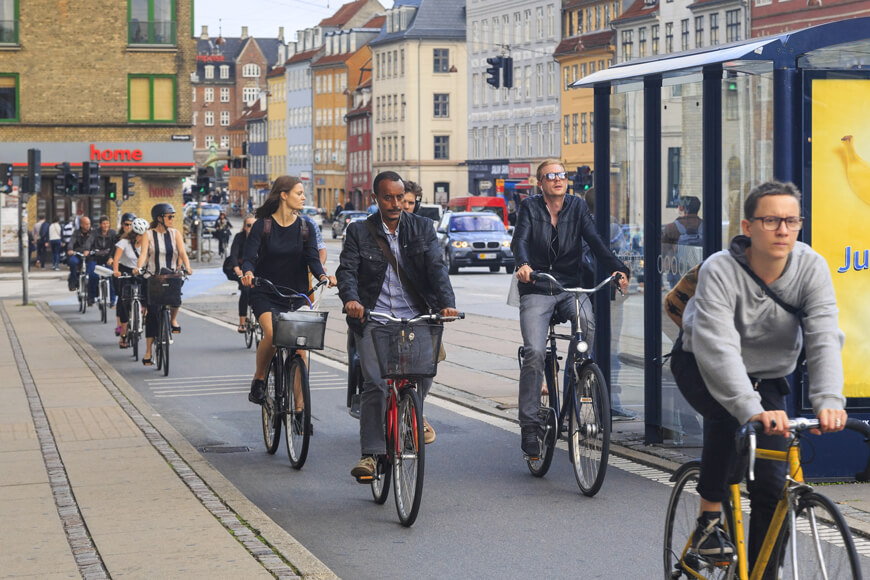
While Americans can take pride in their growing bike culture, cycling has been ubiquitous in European communities for decades.
- In Denmark, 16 percent of all trips—and 25 percent of trips less than 3 miles—are made by bike.
- As in North America, urban areas see more cycling than rural—even then, it’s estimated that half of Copenhagen residents bike to work or school.
- Bike ownership is another big indicator of ubiquitous bicycling culture: 90 percent of Denmark’s population own a bike while only 56 percent own a car.
The situation is similar in the Netherlands.
- In Amsterdam, there are 800,000 bikes and only 263,000 cars. With a population of 779,808, that amounts to more bikes than people!
- Ridership is also high, with about 63 percent of Dutch people riding their bikes daily, and making up about 48 percent of all city traffic (compared to only 22 percent for vehicles).
So why is cycling more common in these countries? It turns out there are a few distinctions to consider.
Cultural frame of mind
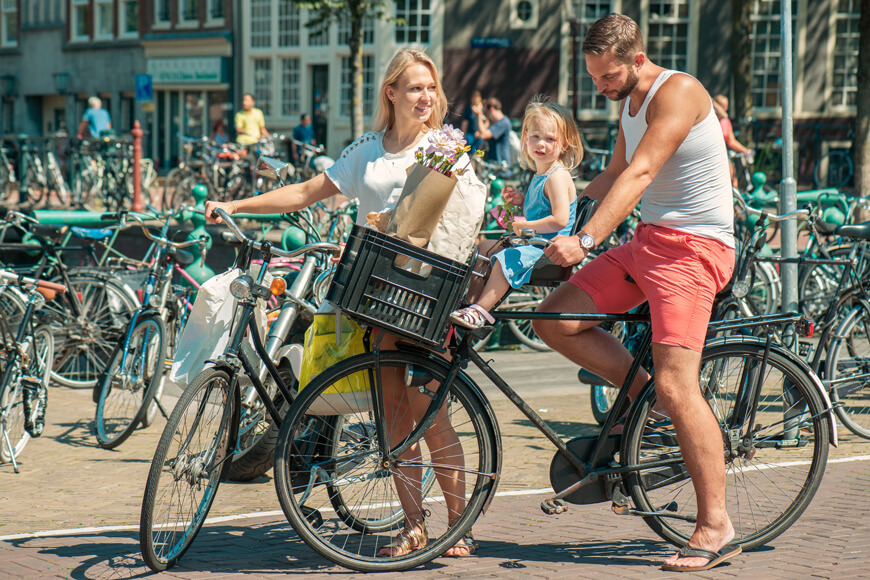
In North America, depending on where you live, bike culture may seem more like a sub- or even counter-culture, popular among groups that differentiate themselves from the mainstream by touting healthier and more sustainable lifestyles. (Depending on your view of cycling, you might even call these people “hipsters”).
In Europe, the culture is much different, as cycling is more pervasive, and sometimes even indistinguishable, from the norm. In 2013, Greg Hascom wrote a series of articles for Grist. He documents his experience in the bike-haven of Copenhagen, Denmark, where he notes people are “as comfortable on their bikes as we [North Americans] are in our cars”.
Denmark and the Netherlands are home to some of the most recognized bicycle communities in the world, and they aren’t limited to 20-somethings biking between classes on campus. Cycling is common across all demographics—men and women, old and young—who commute regularly by bike all-year round. They cycle to work, school, daycare, grocery stores, events—you name it, and it’s a bike destination.
Far from the tricked-out performance bikes you see in many American cities, most people in Copenhagen ride heavy cruiser bikes with wide fenders, large baskets and heavy racks. Bikes are a means to getting from one place to another—and little more. Far from being status symbols, many bikes suffer from the neglect and disrepair of a work or utility vehicle.
Pick up any American cycling magazine, and you’ll see page after page of designer gear and accessory equipment championed by sponsored athletes. As BBC Magazine notes about Amsterdam riders, however, “The bike is an integral part of everyday life rather than a specialist’s accessory or a symbol of a minority lifestyle, so Dutch people don’t concern themselves with having the very latest model of bike or hi-tech gadgets.” Riding attire takes a similar “function over fashion” aesthetic. Instead of form-fitting, performance-oriented Lycra or Spandex synthetic fabrics, Copenhageners ride in their standard jeans, skirts or other business attire.
Bike infrastructure
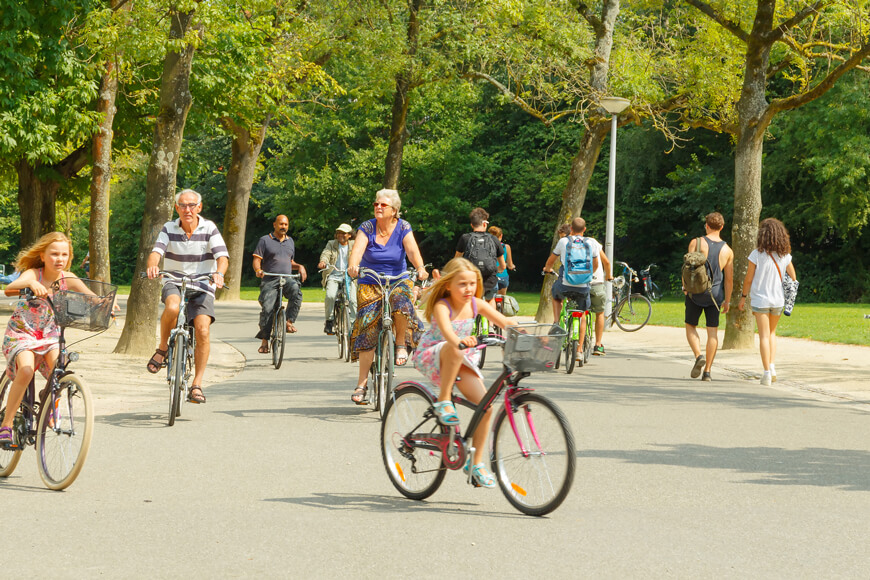
In his visit to Denmark, Hanscom notes that instead of having expansive parking lots for motor vehicles, spaces are dedicated to stacks of bikes parked in the hundreds. Additionally, bike lanes have a clear presence and are well maintained, and “bicycle superhighways” connect nearby suburbs to main city centers. City investment in infrastructure is another significant indicator for the popularity of bike commuting. For example, in Copenhagen, the vast majority of cyclists identify biking as the quickest and most convenient form of transportation available.
A few years back, Roger Geller published a report for the City of Portland that evaluates enthusiasm and support for cycling in the city. He identified a spectrum of cyclists that included the following classes and their representation among the local population:
- Strong and fearless (0.5 percent): Cyclists in this category identify with cycling as part of their identity. They cycle no matter the weather or traffic conditions and are proud and enthusiastic. They have no qualms about cycling alongside motor vehicles.
- Enthused and confident (7 percent): This category includes cyclists who bike often but rely on dedicated infrastructure or stick to side streets. Without city infrastructure, people in this category would not ride as often or at all.
- Interested but concerned (60 percent): This group makes up the majority of residents, who show an interest in cycling but are deterred by perceived barriers related to safety and access to convenient bike routes.
- No way no how (33 percent): People in this group are decidedly opposed to riding a bike as a form of transportation, and no circumstances will change this.
While the report considers some people will cycle no matter the conditions—and others will never cycle due to a lack of interest, health or other reasons—it shows perceived risk is a major deterrent for many would-be cyclists.
It might seem likely that larger urban centers naturally attract more cyclists, but this proves not the case. In many cities—including Dallas, Detroit, Houston, Kansas City and Memphis—less than 0.3 percent of residents cycle to work (less than half the national average). What distinguishes other cities with higher cycling rates such as Chicago (1.2 percent), Toronto (1.7 percent), Washington (2.2 percent), Montreal (2.4 percent), San Francisco (3.0 percent), Vancouver (3.7 percent), Minneapolis (3.9 percent) and Portland (5.5 percent)—is more city-led investment and support. Successful initiatives typically include:
- Bike education programs
- Bike lanes, boulevards and off-street pathways
- Bike-sharing programs
- Cost-sharing programs
- Parking infrastructure
- Transit integration
- Well-connected bike networks
That said, you don’t need to be a city planner to improve bike amenities in your neighborhood. Consider joining a cycling advocacy organizations such as the League of American Bicyclists or HUB Cycling to promote local cycling. An active biking community encourages more local initiatives for cyclists, which in turn attracts more people to join the community.
Infrastructure or enthusiasm: Which comes first?
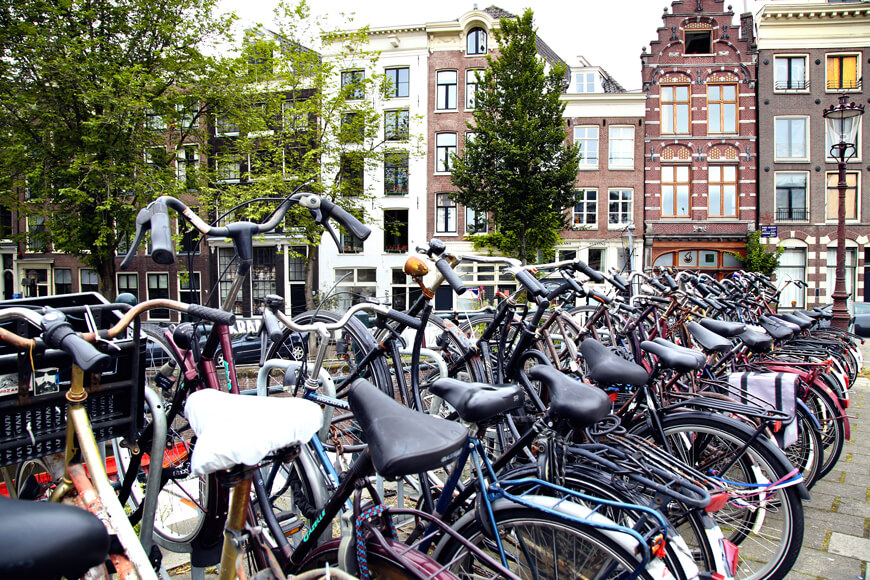
Culture and infrastructure should be looked at as closely related. Infrastructure supports cycling by reducing barriers such as inconvenient routes and perceived threats to safety. But without a strong ridership, it can be difficult for municipalities to justify bike-friendly expenditures. Which comes first, the bike environment or the bikes? Likely, it’s both—and the situation may be different for different communities.
Regardless of which is more effective, both are becoming more prevalent in North America. We mentioned above how North America’s leading bike communities have invested heavily in infrastructure. Education and visibility can also have a huge impact. Critical Mass cycling events have potential as great means for increasing enthusiasm and encouragement by showing demand for municipal support and increasing awareness and safety among drivers.
There are also signs the next generation of commuters have their own commuting ambitions. A recent study at the University of Michigan shows that fewer young people are driving than in previous years. In 1983, 87 percent of 19-year-olds had their driver’s license, compared to 65 percent in 2008.
That said, those in the range of 40-60 years of age showed the greatest increase in cycling between 2001 and 2009, increasing from 10 percent to 21 percent of the cycling population. In comparison, those within the age ranges of 16–24 and 25–39 saw modest increases to 11 percent and 23 percent respectively.
Supporting developments in culture and infrastructure
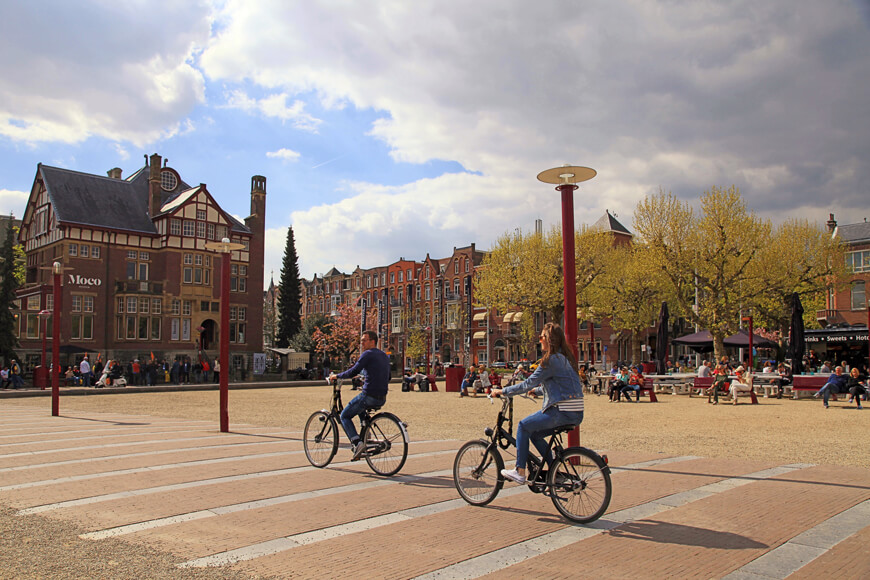
As North American urban environments evolve, we are seeing a shift toward purposeful site design that integrates multiple goals into city landscapes. The spaces we construct communicate and encourage the lifestyles we support. New developments don’t necessarily require major adjustments, but rather, should reinforce seamless integration.
As our bike enthusiasm increases, so does the range of available products and infrastructure. By adding more bicycle infrastructure, such as separated bicycle lanes and bike parking, we will also build the local cycling culture.
Sources
- Amsterdam City Hall. “Cycling facts and figures“. I Amsterdam.
- BBC Magazine. “Why is cycling so popular in the Netherlands“. BBC.com (August 8, 2013).
- City of Copenhagen, The Technical and Environmental Administration Traffic Department. Copenhagen City of Cyclists: Bicycle Account 2012. 2013.
- City of Copenhagen. “Cycle Super Highway“. Denmark.DK The Official Website of Denmark.
- Cycling Embassy of Denmark. “Facts about Cycling in Denmark“. cycling-embassy.dk
- Denmark.dk. “Copenhageners Love Their Bikes“. Denmark.dk: The Official Website of Denmark.
- Geller, Roger. “Four Types of Cyclists“. City of Portland website. 2005.
- Hanscom, Greg. “An American in Denmark: Close encounters with European bicycle culture“. Grist. August 5, 2013.
- Hanscom, Greg. “Spin cycle: Copenhagen’s rise, fall, and rise again to cycling supremacy“. Grist. August 7, 2013.
- Hanscom, Greg. “Riding lessons for U.S. cities from one of Europe’s bike capitals“. Grist. August 9, 2013.
- Pucher, John, Ralph Buehler, and Mark Seinen. “Bicycling Renaissance in North America? An Update and Re-Appraisal of Cycling Trends and Policies“. Transportation Research A, Vol. 45, 2011.
- Sivak, Michael, and Brandon Schoettle. “Recent Changes in the Age Composition of U.S. Drivers: Implications for the Extent, Safety, and Environmental Consequences of Personal Transportation“. Traffic Injury prevention, vol 12., issue 6, 2011.
- United States Department of Transportation, Bureau of Transportation Statistics. “National Transportation Statistics, Table 1-41 – Principal Means of Transportation to Work (Updated April 2014)“. United States Department of Transportation website.










